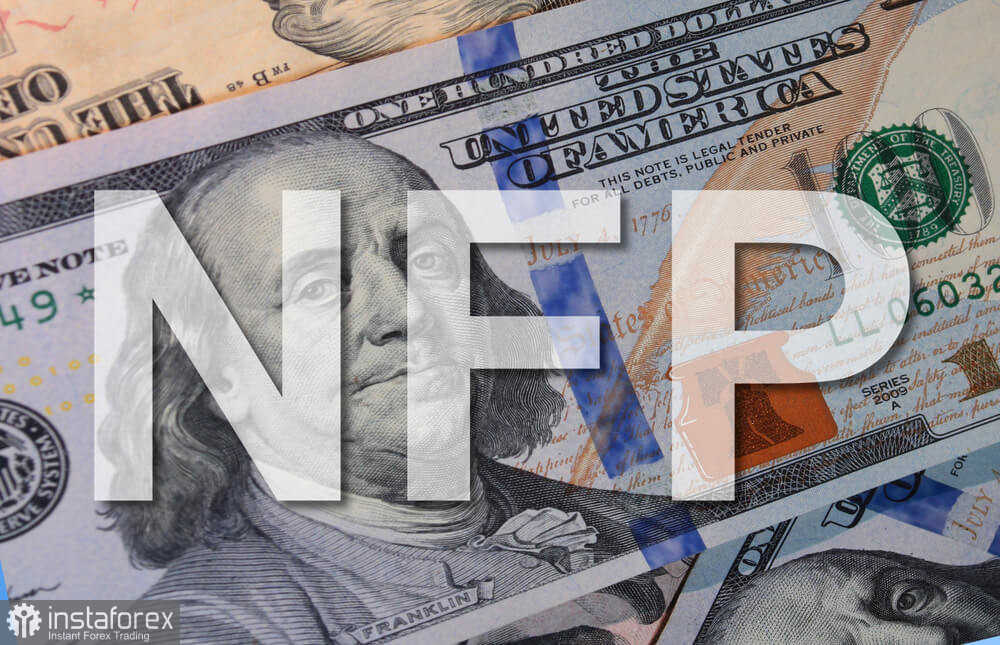Today, traders in the currency market are all focused on the main release of the day and week – Nonfarm data. Preliminary forecasts and indirect signs suggest that the US labor market will not disappoint. In particular, the ADP report on Wednesday came out much higher than the forecasted values, and the weekly increase in the number of initial applications for unemployment benefits has not left the range of 200-207 thousand for the fifth week in a row. All these factors suggest that key data on the growth of the US labor market will be released in the "green zone" today, thereby strengthening the hawkish mood among the Fed members.

The EUR/USD pair continues to trade in the range of 1.1260-1.1360, reflecting the indecision of both buyers and sellers. The current fundamental background for the pair is controversial: on the one hand, we have ADP's strong report and the Fed's "hawkish" minutes, but on the other hand, we have weak ISM indices both in the manufacturing and services sectors. On Tuesday, the manufacturing index came out at around 58.7 points, which is the weakest result since January last year. Compared to the previous month, other components of the release also decreased (the rate of new orders, production volume). The price component of the ISM index (an indicator of the dynamics of the growth of prices for commodities) was at 68.2 against the forecasted growth of 79.3. This is the weakest result since November 2020. ISM's services PMI released yesterday only worsened the situation. It slowed down to 62 points, having the weakest result since September. This is against the forecasted growth of 67 points and the previous 69-point value (record high). In other words, both indicators entered the "red zone", putting slight pressure on the US dollar.
Meanwhile, the euro received support from the Germans yesterday. The published preliminary data reflected the inflation growth in Germany in December. All components of the release came out in the green zone. The general consumer price index in annual terms came out at the level of 5.3% when it was expected to rise to the level of 5.1%. This is the strongest growth rate since 1992. This indicator has been consistently growing for 12 months, that is, since January last year. As for monthly terms, the indicator also exceeded forecast values, reaching 0.5% in December. In November, this component came out in the negative area. The harmonized consumer price index similarly exceeded forecasts - both in monthly and annual terms. It is worth noting that German data quite often correlate with pan-European data, so we can assume that December inflation growth in the eurozone will also be a breakthrough. This is an important point that needs to be discussed separately.
It can be recalled that the EU's inflation last month reached its all-time high, standing at 4.9%. The strongest CPI growth was recorded in all the largest economies of the European Union. However, the market reacted in an unusual way to this fact. Following an impulsive, almost 100-point growth (from the level of 1.1267 to a local high of 1.1355), the pair began to gradually decline, heading back to the lower border of the above range. This movement was due to the ECB's position. The inflationary release was published before the December meeting, but traders foresaw skepticism from regulator members. Their expectations in this regard were justified: the ECB at the December meeting did not get ahead of the events, declaring the end of the Pandemic Emergency Purchase Program in March next year, that is, as originally planned. Moreover, the regulator extended the terms for reinvesting proceeds from redeemed bonds under this program at least until the end of 2024. In addition, ECB members decided to strengthen the traditional stimulus program: the European regulator will double the volume of asset repurchases during the Q2 of this year under the APP program – from 20 to 40 billion euros per month.
Given this background, it can be assumed that today's reaction to the European inflation release will be either modest or impulsive temporary. Moreover, if the main indicators do not reach the forecast values, the euro will be under the strongest pressure. It can be recalled that the head of the Central Bank of France, Francois Villeroy, said this week that inflation in the eurozone is already "close to its peak values." In this context, he reiterated that the European Central Bank should not make hasty decisions.
All this suggests that the positive reaction to the growth of the Eurozone's inflation (provided that it will be released in the "green zone") will be temporary. The US dollar has more powerful support – both from macroeconomic reports and from the Federal Reserve. If today's Nonfarm data come out at least at the level of forecasts, the US currency will be in high demand again.
To summarize everything, it can be concluded that two options for action will be considered: either take a wait-and-see attitude or enter sales during upward bursts. The resistance level is 1.1360 (the upper line of the Bollinger Bands indicator on the daily chart). The main support level is at 1.1240, which corresponds to the lower Bollinger Bands line on the same timeframe.





















